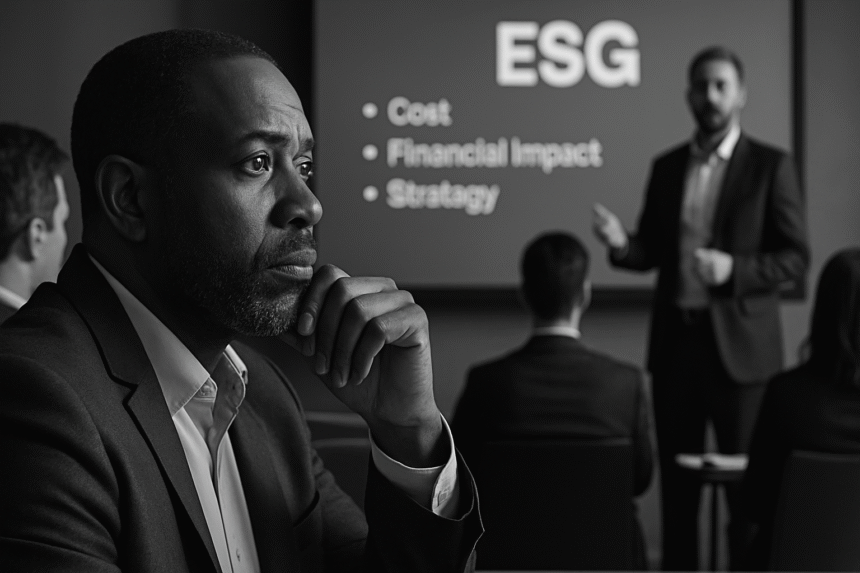Is ESG Costing Us — or Redefining Business Value?
How one LinkedIn post challenged traditional assumptions about ESG as a financial burden and reframed it as a long-term strategic advantage.
Introduction:
“Is ESG a luxury we can’t afford — or a strategic cost we can’t avoid?” With this sharp, thought-provoking line, Raja Shazrin Shah Raja Ehsan Shah pierced through the noise around ESG in a recent LinkedIn post that quickly drew praise, comments, and further reflection from the ESG community and corporate finance professionals. It wasn’t just a catchy question. It was a prompt to reconsider the deeper business logic behind environmental, social, and governance initiatives in a world still debating their return on investment.
Background & Context:
Raja Shazrin Shah is no stranger to industrial strategy and environmental responsibility. A chemical engineer turned sustainability professional, his insight into how ESG principles translate into financial implications is grounded in both science and systems thinking. His post on ESG costs vs. strategic value reflects a growing tension in boardrooms and investment committees: are these frameworks meaningful levers for corporate resilience, or just expensive compliance exercises?
The timing of Raja’s post couldn’t be more apt. With scrutiny rising over “greenwashing” claims and regulatory bodies from the UK to Malaysia advancing sustainability mandates, firms are under pressure to show that ESG disclosures actually matter. His reflections build upon a recent Veridion study showing that ESG-aligned suppliers may be 8–10% more expensive. The follow-up question Raja asks is the one many CFOs quietly ponder: Do those higher costs eventually yield savings through resilience, transparency, and better investor alignment?
Main Takeaways / Observations:
1. Cost vs. Capital: The Deeper Financial Layer of ESG Raja doesn’t stop at surface-level price tags. He unpacks findings from a peer-reviewed study (Moussa & Elmarzouky, 2024) that revealed an intriguing trend: companies that disclose ESG information tend to experience lower capital costs when that disclosure is backed by robust governance. Without strong internal controls and meaningful strategies, however, disclosure alone might increase perceived risk.
This insight reshapes how companies should think about ESG: not as a checkbox or communication tool, but as a financial signal that markets respond to.
2. Transparency Is Not Enough Without Governance Transparency, Raja writes, can increase investor caution if it isn’t grounded in real systems for accountability. This flips the common wisdom about disclosure. It’s not merely the act of sharing data that matters; it’s the strength of the framework behind it. Investors aren’t just looking for reporting—they’re looking for evidence of risk mitigation and resilience.
3. ESG Must Be a Strategic Investment, Not a Line Item Another key theme is that ESG shouldn’t be sidelined as an add-on or marketing tool. Raja suggests that ESG investments must be embedded in corporate strategy, especially for sectors exposed to climate, regulatory, or social risks. “Treating ESG as a short-term cost,” he warns, “means it will stay that way.”
4. Subsidies for ESG? Only if They Target Systemic Infrastructure Raja makes a nuanced argument in favor of government subsidies for ESG — but only when these focus on enabling infrastructure, such as digital audit systems or data environments, particularly for SMEs. He references Malaysia’s RUUPIN regulation as an example of building national alignment with global ESG disclosure standards.
Community Reaction: The post resonated deeply with professionals across the ESG and finance spectrum. Mark Freiberga-Postle noted that in the UK, he expects greater regulatory enforcement within a year, following the Bank of England’s consultations on sustainability governance. Danial Nassurudin added that ESG often appears as a cost in the P&L in the short term, but its value lies in long-term returns.
The broader LinkedIn community echoed this sentiment: sustainability, when approached strategically, shifts from a burden to a lever.
Our Perspective / Analysis:
From a legal and commercial advisory perspective, Raja’s framing offers significant implications. Many contracts today include boilerplate ESG language, but few embed enforceable KPIs tied to disclosure quality, risk mitigation, or alignment with sustainability-linked loan covenants. Lawyers and advisors must now consider: are ESG disclosures in client agreements backed by systems that create real enterprise value? Are incentive clauses structured to reward sustained performance, not just good PR?
Additionally, procurement teams and legal departments need to understand that cost premiums for ESG-compliant vendors may reflect long-term savings in reputation protection, compliance preparedness, and access to green finance.
Call to Reflection or Action (Closing):
If you’re advising a board or drafting a contract, ask yourself: Are you treating ESG as an expense to defend—or as a signal to investors, partners, and markets about how your company will survive and thrive? The long game isn’t about ticking boxes. It’s about reducing the cost of capital and increasing trust in a volatile, decarbonizing world.
Click here to visit LinkedIn Post



Leave a Reply